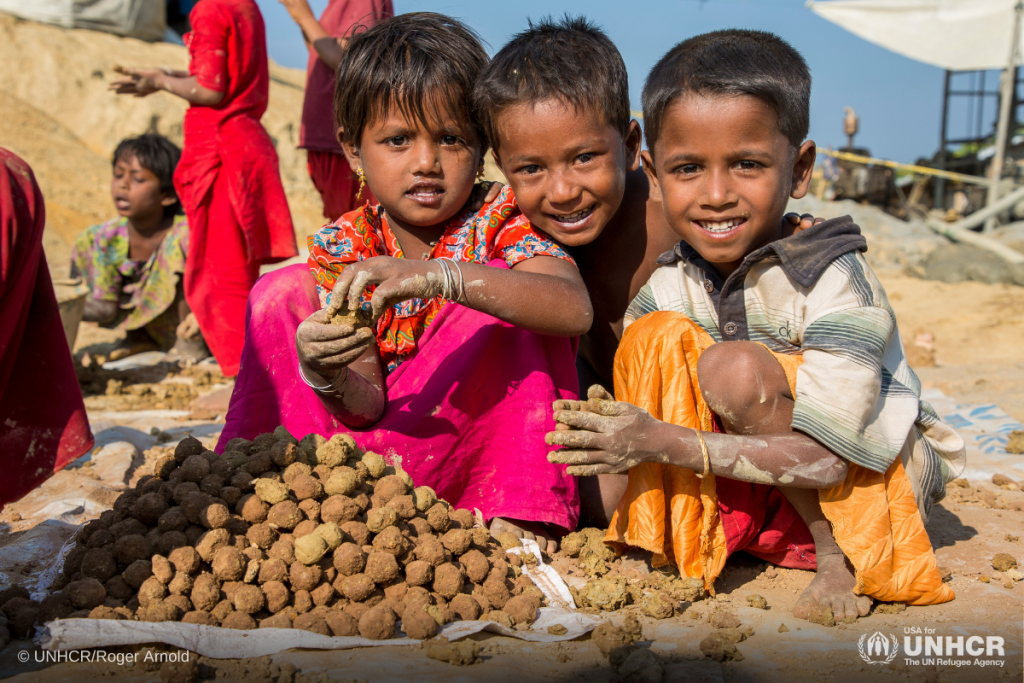By Madara Dias, MHR Program, University of Manitoba
Date: May 15, 2025
Bangladesh is considered a lower-middle-income country, where over one million Rohingya refugees reside. The country has shown considerable support in hosting this displaced community, but its efforts are constrained by insecurity and strained resources, leading to vulnerabilities for both the refugees and the host communities.
In 2017, the World Food Programme initially allocated $12 per person per month for food consumption. However, this amount has steadily declined due to competing global emergencies. The United States, the largest aid donor, has recently reduced its contributions, primarily due to being beset by other humanitarian crises, particularly the emergency in Ukraine. As a result, the monthly food allowance dropped to $10 per person and has now been halved to $6, unless urgent new funding is secured. This leaves a Rohingya family surviving on just 20 cents a day, which is barely enough to afford even staple foods.
In response to this situation, the former U.S. government informed Bangladesh of potential actions that could be taken to address the issue sustainably. Additionally, the United Nations World Food Programme warned that food assistance could be jeopardized due to the ongoing economic downturn.
In 2023, more than 100,000 Rohingya refugees entered Bangladesh, fleeing the conflict in Myanmar. As a result, Cox’s Bazar, near the border with Rakhine State, has become the largest refugee camp in the world. The population continues to grow, with approximately 30,000 children born in the camps each year. Currently, many women are resorting to selling their sanitary items in order to feed their children. According to UNHCR, over 75% of the refugee population consists of women and children. As of February 2025, the rate of children suffering from acute malnutrition has risen to 27%, an increase from the previous year.
Consequently, the refugee community is struggling between survival and criminalization, as formal employment is illegal for them. In addition, Bangladeshi citizens also bear a burden, as the refugee population has placed enormous pressure on local infrastructure and strained the country’s resources.
The Government of Bangladesh is currently dealing with a complex situation, as the presence of refugees has intensified environmental challenges, including deforestation, soil erosion, and water scarcity. Moreover, allowing unrestricted movement of refugees within the country could lead to increased competition for resources and opportunities in host communities.
As the Rohingya community lacks sustainable livelihood opportunities, they face a heightened risk of drug trafficking and exploitation. Additionally, reports have revealed that girls are being married at a young age and are increasingly vulnerable to prostitution and domestic violence. On the other hand, many male teenagers are reportedly involved in drug smuggling, gang activities, and radicalization.
As a result, members of the Rohingya community are seeking even safer places, as recent aid cuts have exacerbated protection and security risks. Ultimately, the continued influx of Rohingya refugees cannot remain entirely dependent on humanitarian aid. It is critically important to empower them to engage in livelihood projects and generate their own income.
Given the growing human desperation in the Rohingya refugee camps, increased diplomatic efforts between Bangladesh and Myanmar will be essential, as the Rohingya are left with fewer means of survival.
The long-term solution is to educate Rohingya children, particularly in English, which will help connect them to the global community. This may also provide an opportunity for them to build self-confidence, develop skills, and cope with the trauma they have experienced as children.



